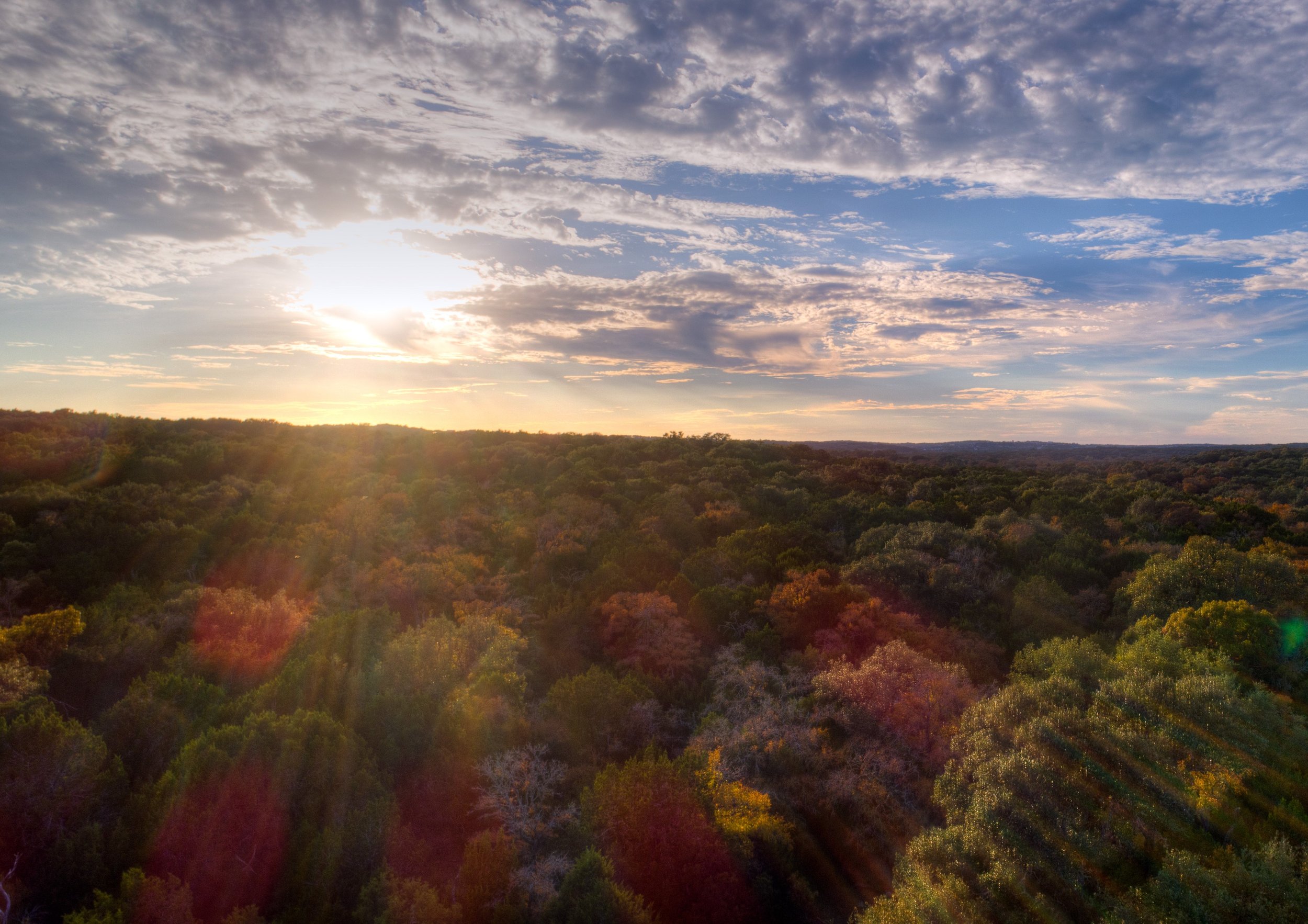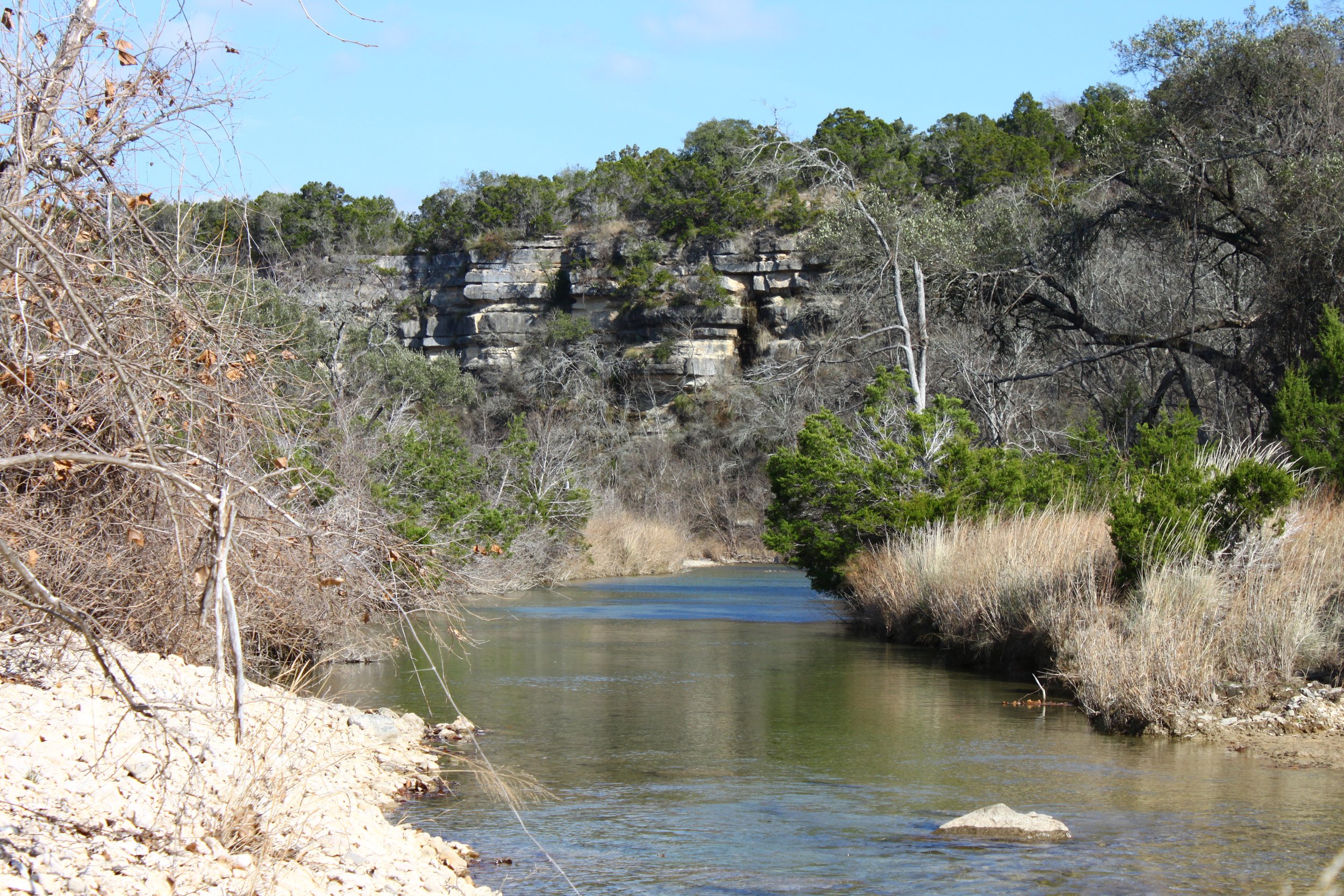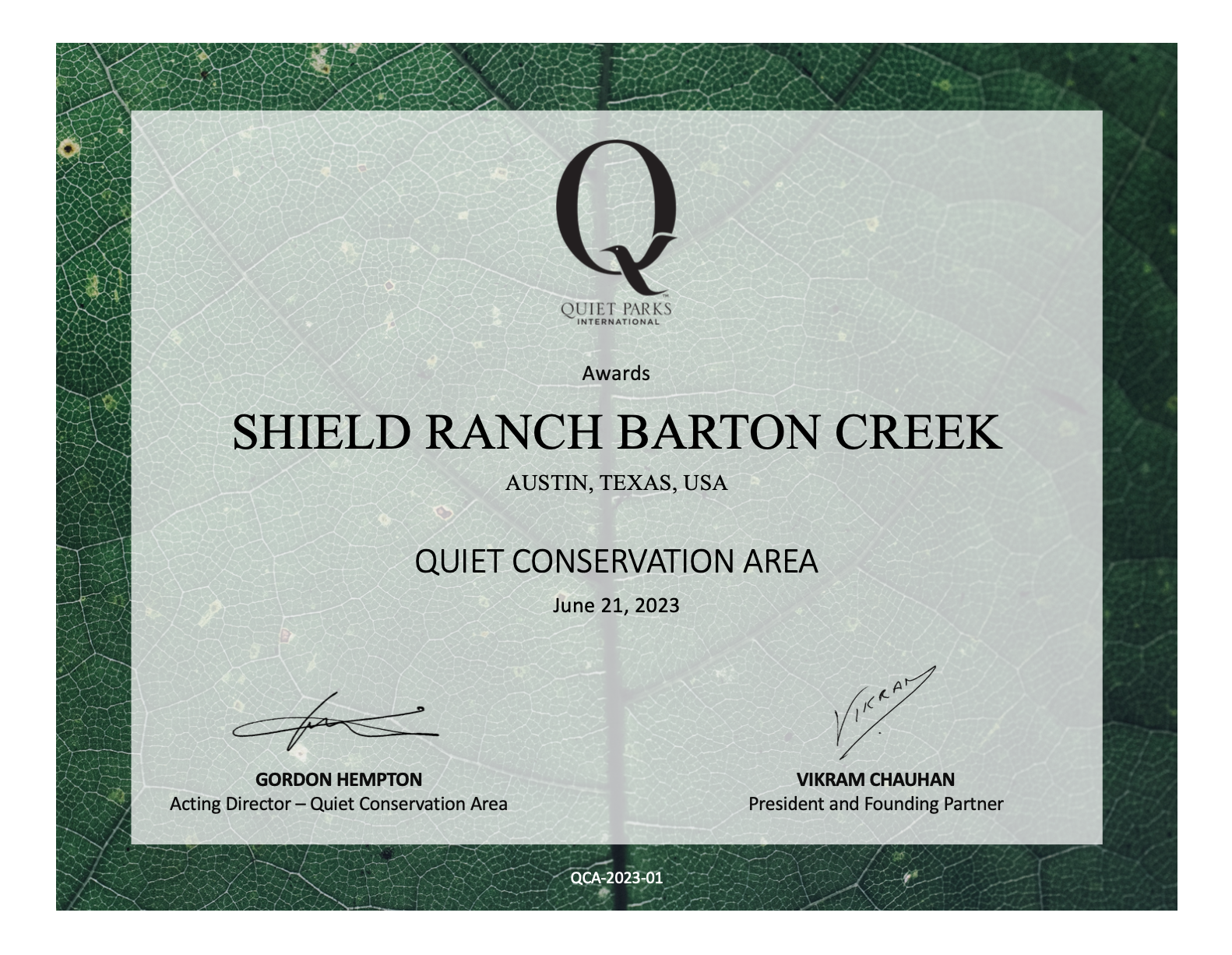QPI Awards Shield Ranch Barton Creek ‘Quiet Conservation Area Award’ in June 2023
Shield Ranch Barton Creek is a privately owned family ranch composed of 6,400- acres of ecologically diverse wildlands in Central Texas which is sustainably managed for the benefit of people and nature. Among the activities are nature-immersion experiences, scientific research, historic preservation, educational outreach and more.
The Shield Ranch Barton Creek Quiet Conservation Area is located 20 miles southwest of the City of Austin at the eastern edge of the Texas Hill Country. The property is protected in perpetuity by two conservation easements which preclude commercial development while allowing traditional agricultural and recreational activities.
The Ranch is a Historic District and listed on the National Register of Historic Places and significant for its rare intact collection of 19th- and 20th-century vernacular resources that represent the evolution of agricultural land use along the eastern edge of the Hill Country.
Scientific research and monitoring on this conservation area provide opportunities for scientists and students to work side by side conducting ecological, hydrological, and historical research, including the study of sound propagation through microclimates.
Threats to the natural quiet at Shield Ranch Barton Creek Quiet Conservation Area is primarily transportation noise and urban expansion due to its proximity to Austin. Shield Ranch Barton Creek received Quiet Conservation Area status on June 21, 2023.
Hydrology
Barton Creek is the outstanding physical feature of Shield Ranch. The creek has carved a meandering run through the Ranch, collecting rainwater and spring flow in numerous tributaries, including Long Branch and Rocky Creek, that join Barton Creek as it flows toward its confluence with the Colorado River in downtown Austin. The Ranch comprises ten percent of the Barton Creek Watershed and is in the contributing zone of the Barton Springs segment of the Edwards Aquifer.
Groundwater
The Ranch lies atop the Trinity-Edwards Aquifer system. Groundwater recharge is almost completely dependent upon rainfall and the flow of surface water in streams that pass over surface outcrops in the region. Groundwater availability in Travis County is vulnerable to periods of prolonged drought and to over-pumpage due to the ongoing development of the area. For these reasons, southwestern Travis County has been designated by the State of Texas as part of a Priority Groundwater Management Area.
Climate
Shield Ranch is located along the 98th meridian between the humid subtropical climate of East Texas, and the more arid Edwards Plateau to the west. Extended drought is common, and the region is also prone to severe flash flooding. The increase of impervious cover resulting from development in area watersheds, coupled with warming weather patterns, has amplified the impact of flooding in recent years.
Geology
Glen Rose limestone predominantly underlies the rolling landscape, which forms naturally benched terrain. Shield Ranch is a classic representation of the stair-step, or riser-tread landforms which characterize the Balcones Canyonlands at the eastern edge of the Edwards Plateau (Woodruff and Wildling, 2008). At higher elevations, on several hilltops, older caprock (Edwards and Walnut formations) are present.
Vegetation
The vegetative communities on the Ranch are diverse and classified generally as Edwards Plateau Limestone savanna and woodland. A dominant component is the prevalence of Ashe juniper and Plateau live oak. Spanish oak, cedar elm, hackberry, and Texas ash are common tree species on the Ranch. Numerous shrubs occupy the landscape, including evergreen sumac, agarita, and Texas persimmon. Short, mid-, and tall grasses and numerous forb species make up the balance of the vegetation.
Wildlife
Due to its size, and the diversity of well-managed habitats for both terrestrial and aquatic species, Shield Ranch is home to a variety of wildlife typical of the Edwards Plateau, but increasingly rare in urbanizing areas. The Ranch actively manages its deer population with the assistance of lease hunters. The Ranch includes habitat for the Golden-cheeked Warbler, an endangered neotropical songbird that breeds in Central Texas.





Photos by Shield Ranch Barton Creek

